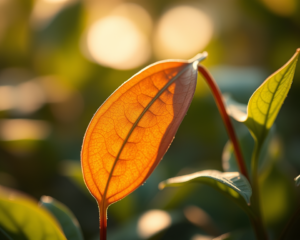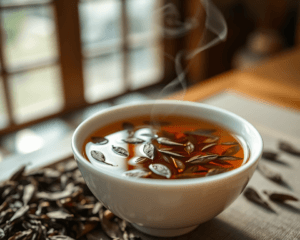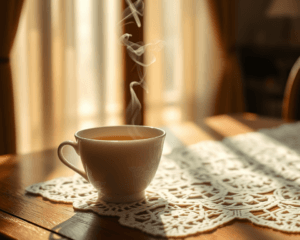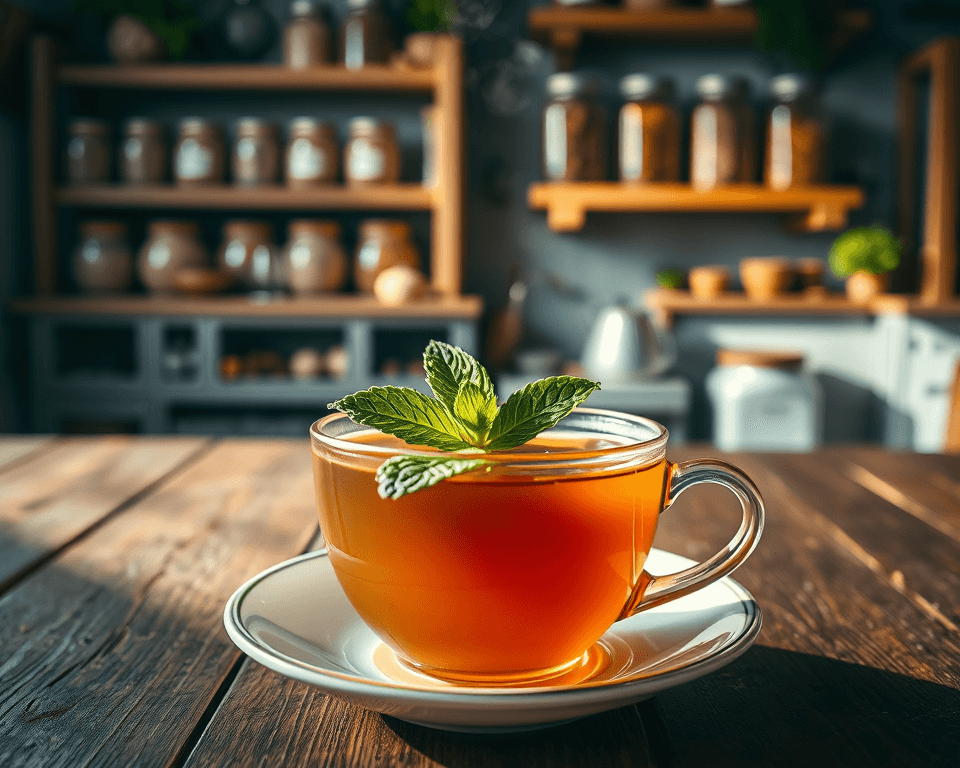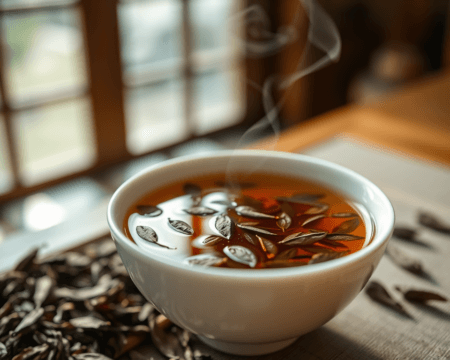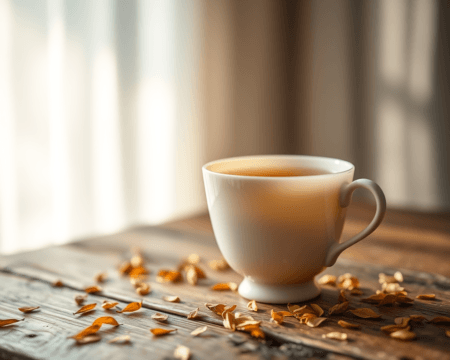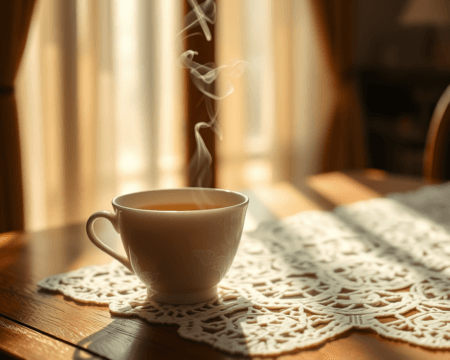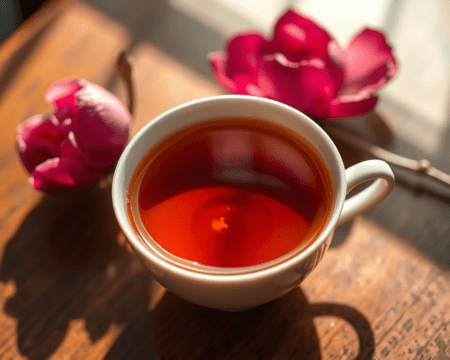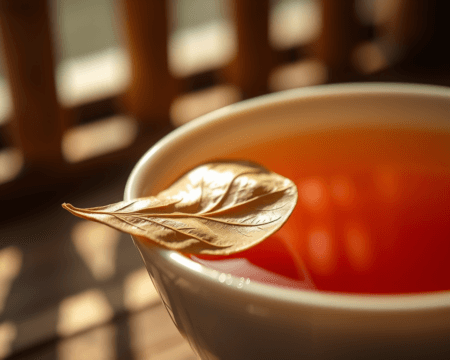There’s just something about a steaming cup of tea that reshuffles the day. Whether you’re starting your morning or winding down at night, knowing how to brew a perfect cup elevates the experience. Who wouldn’t want that? I’ve been there, staring at a pile of tea options and feeling lost. That’s why I’m breaking down the entire process of making tea on the stove, from navigating different types to fixing common mistakes. If you’re ready for a tea journey full of flavor, relaxing aromas, and a few surprises, keep reading.
Key Takeaways
- Different tea types require distinct brewing methods for optimal flavor and aroma.
- Perfect tea involves attention to water temperature and steeping times.
- Troubleshooting common issues like bitterness or weak flavor can enhance your tea-making skills.
- Loose leaf tea often offers a richer, more intense flavor compared to tea bags.
- Alternative brewing methods can save you time while retaining a satisfying taste.
Understanding Different Types of Tea
When you’re gearing up to make tea, the first step is determining the type you’re working with. There’s a rich world beyond just “tea” that includes black, green, herbal, oolong, and white varieties. Each of these tea types comes with its own flavor profile, caffeine content, and optimal brewing method. Think of the adventure ahead!
Common Tea Types and Their Brewing Methods
Black Tea: This is the boldest of the bunch, often high in caffeine. It typically brews best at 200-212°F and requires about 3-5 minutes of steeping time.
Green Tea: Subtly refreshing, green tea is lower in caffeine. You’ll want to steep this beauty at about 170-185°F for just 2-3 minutes to unlock its delicate flavors.
Herbal Tea: Technically not a tea because it’s made from herbs, fruits, or other plant materials, herbal tea can be steeped at boiling point for 5-10 minutes to fully extract those lovely flavors.
Oolong Tea: For a fun twist, oolong offers a flavor complexity between black and green tea. Brew it at about 190-200°F for 3-5 minutes.
White Tea: This is the understated star, known for its light flavor. Gently steep at 160-185°F for 4-5 minutes to appreciate its subtle notes.
Understanding these types is crucial; it sets the groundwork for your brewing technique. You wouldn’t boil green tea like you would black tea. Balance is essential to get that perfect cup.
Brewing Variations for Each Tea Type
Now, let’s talk about brewing variations. Here’s where things get fun. Loose leaf versus tea bags? That’s a real thing! Loose leaf often offers richer flavors due to larger leaves that infuse better. I’m not saying tea bags are bad; they’re just a bit, well, one-dimensional.
When it comes to other brewing methods, like cold brew, it’s all about the time invested. Cold brewing typically takes 8-12 hours and is smooth and almost sweet compared to hot-brewed tea. Precision brewing, using a kettle with temperature settings, can yield the most consistent results.
What about that perfect infusion time? Too long, and you’ll end up with bitterness. Too short, and your teaser will taste weak! Each tea type has its specifics—get to know those times, and you’re halfway to tea mastery.
Step-by-Step Instructions for Making Tea on the Stove
Alright! It’s game time. Let’s run through a straightforward procedure for making tea on the stove. This is where your newfound knowledge comes into play.
Basic Procedure for Brewing Tea
The process isn’t rocket science. First, start by boiling water—if you’ve got a kettle, fantastic. If not, using a pot works just as well.
- Measure out 2 teaspoons of loose tea leaves per cup. If you’re going with bags, it’s usually one bag per cup.
- Heat the water to the appropriate temperature depending on the tea type. I recommend using a thermometer for the exact temp; it’s a game-changer!
- When the water is at the right temp, pour the hot water over the tea leaves in a teapot or directly in your cup.
- Cover and let it steep. Remember those infusion times we discussed? Stick to them and don’t rush this part.
- Strain or remove the leaves/bags and enjoy!
It’s all about the process, folks. You’re not just making a beverage; you’re crafting an experience.
Troubleshooting Common Brewing Mistakes
Even the best of us slip up, and that’s okay! Here are a couple of common landmines to avoid:
Over-Steeping: Did you get distracted while making your tea? Oops. This can lead to a bitter taste. If it happens, try adding a splash of milk or cream to mellow the flavor.
Weak Flavor: If your tea’s too mild, it’s likely you didn’t use enough tea leaves or didn’t steep long enough. Learn the balance!
Using Old Tea: Freshness matters. If you’re sticking to old tea bags, toss them. The flavor diminishes once they lose their vitality.
Don’t let these mistakes turn you off. Instead, think of them as stepping stones to becoming a tea connoisseur!
Tips for Perfecting Your Tea
Now, let’s talk refinement. You want your tea to impress, so let’s get it right by considering water temperature’s impact on flavor. You might think boiling water is always best, but that’s not the case!
Water Temperature Impact on Flavor
Every tea type requests its perfect brewing temperature. Here’s where water temp pulls a fast one—boiling water can scorch delicate leaves like green or white tea. The result? A nasty, bitter brew you won’t enjoy.
Maintaining the right temperature while brewing retains the natural essence. You get flavorful infusions that make you go, “Wow, I really brewed this!” Using a thermometer is a smart way to nail the exact temperature.
One key tip? Always use filtered water. You’ll be blown away at how much this small change can enhance flavors. No one deserves metallic-tasting tea!
Benefits of Using Loose Leaf Tea vs. Tea Bags
Now, let’s hit on the loose leaf versus tea bags debate. If you really want to enjoy an intense flavor experience, loose leaf tea is your best friend. I know it sounds fancier, but it’s not as hard as it seems!
Loose leaf has more room to breathe, which leads to better flavor extraction. I usually go for brands like Harney & Sons or Adagio Teas—both are known for their quality. With prices starting around $7 for a couple of ounces, you’re in for a treat without breaking the bank.
On the flip side, tea bags are convenient and budget-friendly. Look for brands like Twinings, which still offers decent flavor at a low price point.
In this game, it’s all about enhancing your sensory experience. You want that kick of high-quality flavor, whether you’re going loose or bags.
Alternative Brewing Methods
Sometimes convenience wins, and that’s where alternative brewing methods step in. If you’re short on time or just want something easy-peasy, I’ve got you covered!
Quick Methods for Making Tea
Microwave tea? Real thing! Just grab a cup of water, heat it for about 2 minutes, and toss in your tea bag or leaves. It’s quick, but I’d recommend against it if you want the best flavor.
There’s also instant tea, but I’ll be real, it rarely compares to brewed tea. If you’re on the go, keep a travel tea infuser around. You can steep your tea while you work or travel — no need to sacrifice flavor for convenience!
Efficiency doesn’t mean you have to sacrifice that delicious taste. Find a method that works for you while still keeping those flavors on point!
Comparing Stovetop and Other Brewing Methods
When it comes to brewing methods, nothing beats the stovetop in terms of control and consistency. Sure, electric kettles are excellent for quick heats, and French presses provide unique flavors. But being able to monitor the steeping process yourself? Absolute power.
Stovetop brewing gives you a greater ability to fine-tune; you can adjust heat easily. Compare that to using a cold brew method, which requires that long wait. No offense to iced tea lovers, but for flavor, I sometimes crave a piping hot cup!
That said, explore and find what fits your lifestyle best!
Creating a memorable tea experience isn’t just about the sipping; it’s about the entire process. Make it intentional, and enjoy the art of crafting something delightful, whether you’re a novice or just getting back into the swing of things. You’re not just making tea; you’re making magic!
Frequently Asked Questions
What is the best water temperature for brewing different types of tea?
Water temperature is crucial for enhancing flavor. Generally, green and white teas thrive at lower temperatures of 160-180°F (70-82°C), while oolong and black teas need hotter water, around 190-212°F (88-100°C). Herbal teas can also be brewed at boiling point.
How long should I steep loose leaf tea?
Steeping times vary by tea type: white tea requires about 4-6 minutes, green tea about 2-3 minutes, oolong tea between 3-5 minutes, and black tea typically takes 4-5 minutes. Always refer to specific recommendations for optimal flavor.
How do I avoid bitterness in my tea?
Bitterness often results from over-steeping or using water that is too hot. To prevent this, use the correct steeping time and temperature for your specific tea type. Additionally, consider using high-quality leaves, which can enhance flavor and reduce harshness.
Can you reuse loose leaf tea leaves?
Yes, loose leaf tea leaves can often be reused for multiple steepings. Many varieties, especially oolong and pu-erh, may even develop richer flavors with second or third infusions. Adjust steeping times for each infusion, as they may require less time than the first brew.
What are the benefits of using loose leaf tea over tea bags?
Loose leaf tea typically offers a richer flavor, as the leaves are whole and allow for better infusion. Additionally, it often contains less dust and fannings compared to tea bags, which can lead to a fresher taste. Loose leaf tea also provides more variety and higher-quality options.
Can I brew tea without a specific teapot or equipment?
Absolutely! While specialized teapots can enhance the tea experience, you can brew tea using common kitchen items. A simple mug with a strainer, a French press, or even an infuser ball can work well to steep loose leaf tea effectively.
How does the quality of tea affect brewing?
High-quality tea leaves tend to have better flavor and aroma, requiring less time to steep and producing a more enjoyable cup. Investing in good quality tea can improve your overall experience, as premium leaves often provide a more nuanced and rich taste profile.
Are there alternative methods for brewing tea besides steeping?
Yes, alternative brewing methods like cold brewing or using a tea press are popular. Cold brewing involves steeping tea leaves in cold water for several hours, yielding a smooth, less bitter flavor. A tea press allows for easy, controlled steeping without specific steeping vessels.
What should I do if my tea tastes weak?
If your tea tastes weak, check the amount of tea leaves used; a common ratio is one teaspoon per cup. Also, ensure you’re using the correct brewing time and water temperature. Adjusting these parameters can significantly enhance the tea’s flavor strength.
